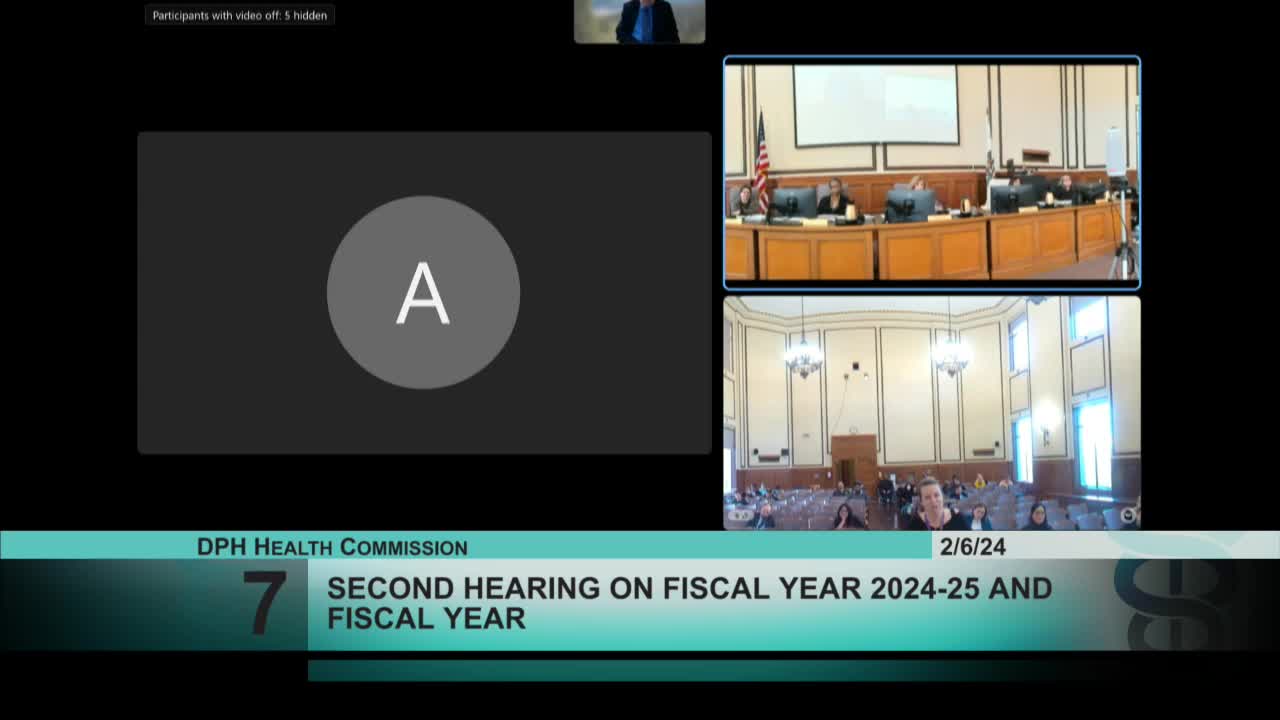Local Healthcare Worker highlights staffing challenges and wrongful termination settlements
February 06, 2024 | San Francisco City, San Francisco County, California

This article was created by AI summarizing key points discussed. AI makes mistakes, so for full details and context, please refer to the video of the full meeting. Please report any errors so we can fix them. Report an error »

During a recent government meeting in San Francisco, significant discussions highlighted pressing concerns regarding staffing, budget cuts, and public safety within the city's healthcare and law enforcement sectors.
One of the most impactful topics raised was the ongoing struggle to retain nursing staff at local hospitals. A representative pointed out that the city’s hospitals are facing a staffing crisis, with nurses earning 12 to 18% less than their counterparts in neighboring facilities. This wage disparity has led to a high turnover rate, as newly trained nurses often leave for better-paying positions at institutions like UC, Kaiser, and Sutter. The representative emphasized that it costs approximately $88,000 to train each new graduate nurse, raising concerns about the effective use of taxpayer dollars when these trained professionals leave the city.
Additionally, the meeting addressed the alarming safety issues within the city’s healthcare facilities. A report was shared about a recent incident in the inpatient psychiatric unit, where nine staff members were assaulted in a single day. This incident underscores the critical need for adequate security measures and staffing levels, particularly in high-risk environments. The speaker urged caution regarding proposed cuts to sheriff's department funding, highlighting personal experiences that illustrate the importance of having sufficient law enforcement presence in healthcare settings.
The meeting also touched on the financial implications of overtime work, with staff reportedly logging over 356,000 hours of overtime. This figure raises questions about budget management and the sustainability of current staffing levels, especially as the city prepares for upcoming bargaining discussions.
As San Francisco navigates these challenges, the community is urged to consider the broader implications of staffing shortages and budget cuts on public health and safety. The discussions from this meeting reflect ongoing concerns that will require careful attention from city officials to ensure the well-being of both healthcare workers and the residents they serve.
One of the most impactful topics raised was the ongoing struggle to retain nursing staff at local hospitals. A representative pointed out that the city’s hospitals are facing a staffing crisis, with nurses earning 12 to 18% less than their counterparts in neighboring facilities. This wage disparity has led to a high turnover rate, as newly trained nurses often leave for better-paying positions at institutions like UC, Kaiser, and Sutter. The representative emphasized that it costs approximately $88,000 to train each new graduate nurse, raising concerns about the effective use of taxpayer dollars when these trained professionals leave the city.
Additionally, the meeting addressed the alarming safety issues within the city’s healthcare facilities. A report was shared about a recent incident in the inpatient psychiatric unit, where nine staff members were assaulted in a single day. This incident underscores the critical need for adequate security measures and staffing levels, particularly in high-risk environments. The speaker urged caution regarding proposed cuts to sheriff's department funding, highlighting personal experiences that illustrate the importance of having sufficient law enforcement presence in healthcare settings.
The meeting also touched on the financial implications of overtime work, with staff reportedly logging over 356,000 hours of overtime. This figure raises questions about budget management and the sustainability of current staffing levels, especially as the city prepares for upcoming bargaining discussions.
As San Francisco navigates these challenges, the community is urged to consider the broader implications of staffing shortages and budget cuts on public health and safety. The discussions from this meeting reflect ongoing concerns that will require careful attention from city officials to ensure the well-being of both healthcare workers and the residents they serve.
View full meeting
This article is based on a recent meeting—watch the full video and explore the complete transcript for deeper insights into the discussion.
View full meeting
